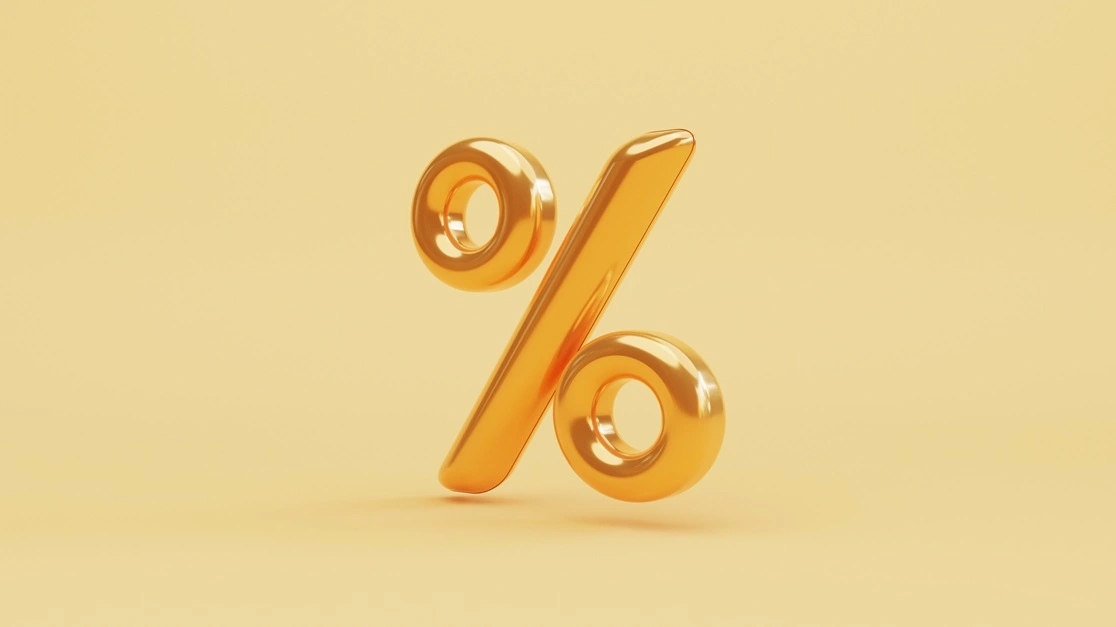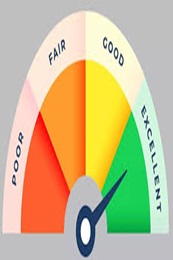Understanding the Reverse Repo Rate: A Key Component of India's Monetary Policy
April 15, 2025

On 7 February 2025, the Reserve Bank of India (RBI) cut the repo rate by 25 basis points, marking the first rate cut in 5 years. The current repo rate stands at 6% and the reverse repo rate at 3.35%. These rates are pivotal in shaping the nation's economic landscape, influencing everything from inflation to consumer spending. We have already shed light on repo rate. In this blog, we have decoded the concept of reverse repo rate and what it means for India’s economy.
What is the Reverse Repo Rate?
The reverse repo rate is the interest rate at which the RBI borrows money from commercial banks within the country. It serves as a tool for the central bank to control liquidity in the banking system. When the RBI increases the reverse repo rate, it encourages banks to park more funds with the central bank, thereby reducing the amount of money available in the economy. Conversely, a decrease in the reverse repo rate makes it less attractive for banks to deposit funds with the RBI, leading them to lend more to consumers and businesses.
The Role of Reverse Repo Rate in Monetary Policy
The reverse repo rate is instrumental in the RBI's monetary policy framework. By adjusting this rate, the central bank can influence short-term interest rates and manage inflation. For instance, to curb inflationary pressures, the RBI may increase the reverse repo rate, thereby reducing the money supply. On the other hand, to stimulate economic growth, the RBI might lower the reverse repo rate to encourage lending and investment.
Current Economic Context
In recent times, the Indian economy has faced challenges such as currency depreciation and fluctuating inflation rates. The weakening of the rupee has complicated the RBI's monetary policy decisions, particularly concerning interest rate adjustments. Despite these challenges, the RBI has opted to keep the reverse repo rate steady at 3.35%.
Effect of Reverse Repo Rate on Home Loans
The reverse repo rate significantly influences home loan interest rates, impacting borrowers' monthly outflows and long-term financial commitments. Here's how it works:
1. Relationship Between Reverse Repo Rate and Home Loan Interest Rates
Higher Reverse Repo Rate:
When the RBI increases the reverse repo rate, banks tend to park more surplus funds with the RBI due to higher returns. This reduces the liquidity available for lending, leading to an increase in home loan interest rates. As a result, borrowing becomes costlier for homebuyers, which may discourage new home purchases or refinancing.
Lower Reverse Repo Rate
A decrease in the reverse repo rate makes it less attractive for banks to deposit funds with the RBI. Consequently, banks have more funds available for lending, and competition among banks may lead to reduced home loan interest rates. Lower rates encourage homebuyers to take loans, boosting demand in the real estate sector.
2. Impact on Existing Home Loan Borrowers
- Borrowers with fixed-rate home loans are not directly affected by changes in the reverse repo rate, as their interest rate remains constant throughout the loan tenure.
- Borrowers with floating-rate home loans, however, experience fluctuations in their EMIs (Equated Monthly Instalments). When the reverse repo rate decreases, home loan interest rates are likely to drop, leading to lower EMIs and reduced interest outgo over the loan tenure.
3. Effect on Home Loan Affordability
- A lower reverse repo rate translates to lower home loan rates, improving affordability for prospective buyers. For instance, reduced interest rates mean lower monthly payments or the ability to borrow a higher amount within the same budget.
- Conversely, a higher reverse repo rate increases the cost of borrowing, making home loans less affordable and possibly slowing down the housing market.
Effect of Reverse Repo Rate on the Economy
The reverse repo rate plays a crucial role in shaping the economic environment of a country. Its effects are profound, influencing liquidity, inflation, interest rates, and overall economic growth. Here's how changes in the reverse repo rate impact the economy:
1. Liquidity Management
When the RBI increases the reverse repo rate, banks find it more lucrative to park their excess funds with the central bank. This reduces the liquidity in the economy as less money is available for lending to businesses and consumers.
A decrease in the reverse repo rate discourages banks from depositing funds with the RBI, pushing them to lend more. This increases liquidity in the market, stimulating economic activity.
2. Inflation Control
During periods of high inflation, the RBI may raise the reverse repo rate to reduce the money supply. This helps in curbing excessive spending and cooling down price levels. In contrast, during deflationary or low-inflation scenarios, a lower reverse repo rate encourages banks to lend more, increasing consumer spending and investment, thereby boosting inflation.
3. Impact on Interest Rates
Changes in the reverse repo rate influence the overall interest rate trends in the economy. For instance, a higher reverse repo rate can lead to an increase in deposit and lending rates as banks adjust their interest structures to align with RBI policies. A lower reverse repo rate can result in a decrease in interest rates, making borrowing cheaper for consumers and businesses.
4. Economic Growth
A lower reverse repo rate encourages borrowing and investment, which can lead to increased economic activities, higher employment, and robust GDP growth.
A higher reverse repo rate can restrict growth by making borrowing more expensive, which may slow down investments and reduce consumption.
5. Impact on Financial Markets
The reverse repo rate indirectly affects stock markets and bond yields. A higher rate can lead to reduced liquidity in financial markets, often causing stock prices to fall. Conversely, a lower reverse repo rate can inject liquidity, driving market growth.
For instance, during the COVID-19 pandemic, the RBI significantly reduced the reverse repo rate to 3.35% (a historic low) to infuse liquidity and support economic recovery. This move aimed to ensure that banks lent more to businesses and consumers, stimulating the economy during a crisis.
Final Thoughts
The reverse repo rate is a critical instrument in the RBI's toolkit for regulating the country's monetary policy. Understanding its function and impact can provide valuable insights into the broader economic environment and the central bank's strategies for maintaining financial stability.
Buying a house has never been this easy! Avail Ujjivan SFB’s wide range of affordable home loan products and enjoy a hassle-free loan journey. From house purchase loan to plot loans and home improvement loans, we have it all! Alternatively, you can browse through Ujjivan SFB product suite - our wide range of financial products are designed to make your financial life better.
FAQs
1. What is the difference between the repo rate and the reverse repo rate?
The repo rate is the rate at which the RBI lends money to commercial banks, while the reverse repo rate is the rate at which the RBI borrows money from commercial banks.
2. How does a change in the reverse repo rate affect inflation?
An increase in the reverse repo rate can help reduce inflation by decreasing the money supply, as banks are incentivized to deposit more funds with the RBI.
3. Why is the reverse repo rate lower than the repo rate?
The reverse repo rate is typically lower to encourage banks to lend more to the public rather than depositing excess funds with the RBI.
4. How often does the RBI review the reverse repo rate?
The RBI reviews the reverse repo rate during its bi-monthly Monetary Policy Committee meetings.
5. Can the reverse repo rate impact loan interest rates?
Yes, changes in the reverse repo rate can influence overall interest rate trends, affecting loan and deposit rates in the economy.
6. What happens when the reverse repo rate is increased?
Banks are encouraged to deposit more funds with the RBI, leading to a reduction in the money supply and potentially lowering inflation.
7. Is the reverse repo rate the same across all countries?
No, each country's central bank sets its own reverse repo rate based on its economic conditions and monetary policy objectives.
8. How does the reverse repo rate affect the common man?
Indirectly, it influences interest rates on loans and deposits, affecting borrowing costs and savings returns for individuals.
9. What is the current reverse repo rate in India?
As of January 21, 2025, the reverse repo rate is 3.35%
Latest Blogs

Telangana Housing Board & KPHB Colony: A Guide to Affordable Urban Housing in Hyderabad
March 14, 2025
As Telangana continues its rapid urbanisation journey, two key housing entities—Telangana Housing Board (THB) and Kukatpally Housing Board Colony (KPHB)—have played critical roles in shaping the state's real estate ecosystem.

Does Checking CIBIL Score Frequently Lower Your Credit Points?
April 07, 2025
Imagine you're planning to apply for a home loan, a credit card, or even a car loan. Naturally, you want to ensure your CIBIL score is in good shape before proceeding.

Explained: Can NRIs Buy an Agricultural Land in India?
April 03, 2025
Real estate investment is often a top priority for Non-Resident Indians (NRIs) looking to retain strong financial ties to India.

How to Improve Your CIBIL Score from 600 to 750: A Step-by-Step Guide
April 02, 2025
Your CIBIL score is like your financial reputation—banks check it before approving loans or credit cards. If your score is hovering around 600, you might face difficulties in securing credit or may get loans with higher interest rates.

What Happens When You Leave Your Savings Account Unused?
April 01, 2025
Imagine waking up one day to find that your hard-earned money is locked away and inaccessible. Sounds stressful, right? This is precisely what happens when you leave your Savings Account inactive for too long.



